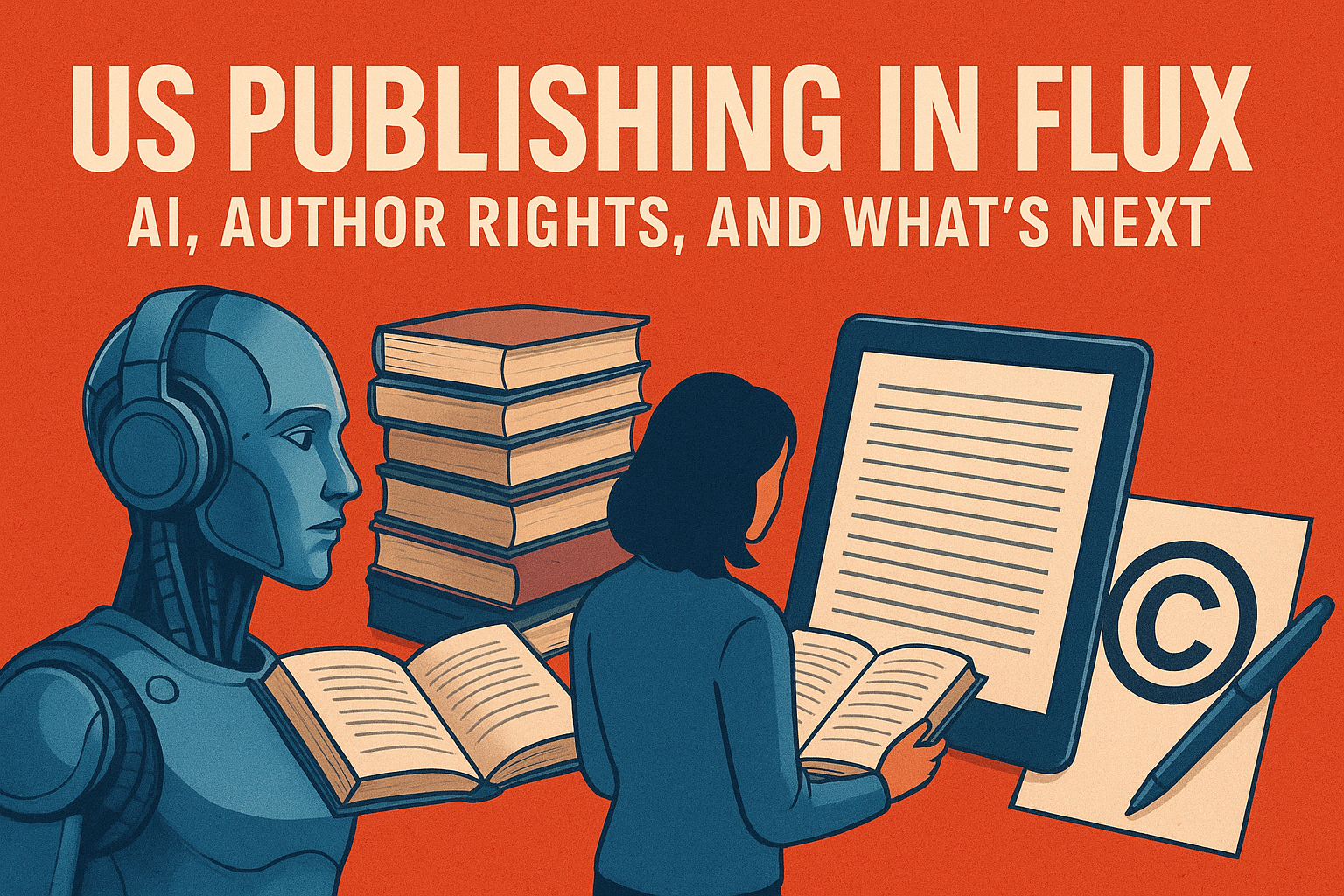A Step-by-Step Guide to Self-Publishing and Marketing Your Nonfiction Book

Nonfiction is a genre of writing that presents factual information, real events, and real people. Unlike fiction, which is based on imaginative storytelling, nonfiction aims to convey truth and accuracy. The primary purpose of nonfiction is to inform, educate, or document reality, often drawing on research, data, or firsthand experiences.
Publishing a nonfiction book is a rewarding journey that allows you to share your knowledge, experiences, and insights with a wide audience. Whether you’re documenting history, offering expert advice, telling a personal story, or exploring scientific concepts, nonfiction writing provides a powerful platform to educate, inspire, and engage readers. The process of bringing a nonfiction book to life — from refining your idea to marketing the final product — requires careful planning, dedication, and a clear understanding of your audience’s needs. With the right approach, you can create a compelling, impactful book that resonates with readers and stands out in the marketplace.
Here’s a general guide to help you navigate the journey:
1. Conceptualize Your Idea
- Identify your niche. Pinpoint a specific area of focus within your broader topic that distinguishes your book from others. Understanding your niche helps you target a dedicated audience and tailor your content to address their unique interests and needs.
- Research the market. Analyze existing books and trends in your topic area to understand what’s already available and where your book can add value. This helps you identify gaps, avoid duplication, and refine your book’s unique selling points.
- Define your audience. Determine who will benefit most from your book by identifying their demographics, interests, and needs. Understanding your audience helps tailor your content, messaging, and marketing strategies to effectively reach and engage them.
2. Planning and Outlining
- Create a detailed outline. Structure your book by breaking it down into chapters and sections. An outline provides a clear roadmap for your content, helping to organize your ideas logically and ensure a cohesive flow throughout the manuscript.
- Set a writing schedule. Establish a consistent routine for writing, with specific time slots and goals. A writing schedule helps you stay disciplined, manage your time effectively, and make steady progress toward completing your manuscript.
3. Writing the Manuscript
- Start with a strong introduction. Begin your book with an engaging opening that captures the reader’s attention and clearly outlines the key themes and purpose. A compelling introduction sets the stage for the rest of the book and encourages readers to continue.
- Focus on clarity and engagement. Write with clear, concise language and engaging content to effectively communicate your ideas. Ensure your writing is accessible and compelling, keeping readers interested and making complex information easy to understand.
- Revise and refine. Review and improve your manuscript by addressing structural, stylistic, and content issues. Editing for clarity, coherence, and precision ensures your book effectively conveys your message and meets high standards of quality.
4. Seek Feedback
- Beta readers. Share your manuscript with a select group of readers who provide feedback on its content, clarity, and overall impact. Their insights help identify strengths and areas for improvement before finalizing your book.
- Professional editing. Engage a skilled editor to review and polish your manuscript, ensuring it is well-structured, clear, and error-free. Professional editing enhances the overall quality and readability of your book.
5. Publishing Options
- Traditional publishing. A process where a publishing house handles the production, distribution, and marketing of your book. This involves securing a book deal, often through an agent, and working with industry professionals to bring your book to market, typically with no upfront costs to the author.
- Find an agent: Seek a literary agent who specializes in your genre to represent your book to publishers. An agent can provide valuable industry connections, negotiate contracts, and guide you through the publishing process.
- Submit to publishers: Send your manuscript or proposal to publishers, following their submission guidelines. This step involves presenting your book for consideration, often with the help of a literary agent, to secure a publishing deal.
- Self-publishing. A process where the author manages the production, distribution, and marketing of their book independently. This involves handling all aspects of publishing, including editing, design, and promotion, often using platforms like Amazon KDP or IngramSpark, with full control over the process and profits.
- Choose a platform: Select a publishing platform, such as Amazon KDP or IngramSpark, to distribute your book. The platform you choose will impact your book’s reach, formatting options, and sales channels.
- DIY or hire help: Decide whether to handle the publishing process yourself or enlist professional services for tasks like cover design, formatting, and marketing. Weigh the benefits of each option based on your skills, budget, and goals.
6. Book Design
- Cover design. Create an eye-catching and professional cover that visually represents your book’s content and genre. A well-designed cover attracts readers and makes a strong first impression.
- Interior formatting. Arrange the text and layout of your book’s pages to ensure a polished and readable presentation. Proper formatting includes consistent typography, spacing, and chapter organization to enhance the reader’s experience.
And then there’s the marketing…
Marketing fiction and nonfiction books involves distinct strategies due to the differing nature of their content and audiences. Fiction marketing revolves around captivating stories, emotional engagement, and genre appeal, aiming to connect with readers through compelling narratives and immersive experiences. In contrast, nonfiction marketing focuses on demonstrating expertise, delivering valuable information, and addressing specific needs or challenges. The approaches vary in terms of audience targeting, content emphasis, and promotional channels, each tailored to effectively reach and resonate with the intended readers of these genres. Understanding these differences is key to developing effective marketing strategies for both fiction and nonfiction books.
Marketing a nonfiction book requires a targeted and strategic approach that goes beyond just promoting a product — it’s about positioning yourself as an authority and your book as a valuable resource. Unlike fiction, where emotional engagement and storytelling take center stage, nonfiction marketing focuses on reaching a specific audience with a clear need or interest in the subject matter. By leveraging your expertise, identifying the right channels, and creating content that highlights the practical benefits of your book, you can effectively connect with readers who are eager to learn, grow, and apply the knowledge you provide.
Here’s how you can effectively market your nonfiction book:
1. Identify Your Target Audience
- Understand your readers. Gain insights into your audience’s preferences, needs, and challenges. This understanding helps tailor your content and marketing strategies to effectively engage and resonate with them.
- Create reader personas. Develop detailed profiles of your ideal readers, including their demographics, interests, and behaviors. These personas guide your content and marketing strategies, ensuring they align with your audience’s needs and preferences.
2. Build an Author Platform
- Website. Build a professional online presence showcasing your book, author bio, and related content. A well-designed website serves as a central hub for readers to learn more about your work and connect with you.
- Social media. Use platforms like Facebook, Twitter, and Instagram to engage with your audience, share updates about your book, and build a community around your work. Social media helps you connect directly with readers and promote your book effectively.
- Email newsletter. Create a regular email update to communicate with your subscribers. Share news about your book, provide valuable content, and offer exclusive insights or promotions to build a loyal readership.
3. Take Advantage of Content Marketing
- Blogging. Write and publish articles on topics related to your book to attract and engage your target audience. Blogging helps establish your expertise, provide value, and drive interest in your book.
- Guest blogging. Contribute articles to other blogs or websites in your niche. This strategy helps you reach a broader audience, build credibility, and drive traffic to your own site or book.
- Podcasts and webinars. Participate in or host podcasts and webinars to discuss topics related to your book. These formats allow you to engage with your audience, share your expertise, and promote your book through interactive content.
4. Engage in Public Speaking
- Workshops and seminars. Offer or attend events focused on your book’s subject matter. These opportunities allow you to present valuable information, engage with your audience, and build your reputation as an expert.
- Book signings and launch events: Host events to celebrate your book’s release, meet readers, and sign copies. These events generate buzz, build connections with your audience, and provide a platform for direct engagement.
5. Get Reviews and Endorsements
- Advance reader copies (ARCs). Distribute early versions of your book to reviewers, influencers, and industry professionals before the official release. ARCs help generate early reviews and buzz, building anticipation and credibility.
- Reach out for endorsements. Contact experts, influencers, or well-known figures in your field to provide testimonials or endorsements for your book. Their endorsements add credibility and can significantly enhance your book’s visibility and appeal.
6. Utilize Online Advertising
- Amazon ads. Use Amazon’s advertising platform to promote your book directly on Amazon. Target specific keywords and audiences to increase visibility, drive sales, and attract readers actively searching for books in your genre.
- Social media ads. Run targeted advertisements on platforms like Facebook and Instagram to reach specific audiences based on interests, demographics, and behaviors. Social media ads help drive awareness, engagement, and sales for your book.
- Google ads. Utilize Google’s advertising platform to target specific keywords and display ads across Google search results and partner sites. Google Ads help increase visibility, attract potential readers, and drive traffic to your book’s sales page.
7. Maximize Book Distribution
- Optimize Amazon listing. Enhance your book’s Amazon page with a compelling description, relevant keywords, and high-quality cover images. Effective optimization improves searchability, attracts potential buyers, and boosts sales.
- IngramSpark and other distributors. Use distribution platforms like IngramSpark to get your book into bookstores, libraries, and online retailers. These distributors expand your book’s reach and increase its availability across various sales channels.
8. Use Public Relations
- Press releases. Write and distribute formal announcements to media outlets about significant events related to your book, such as its launch, awards, or notable achievements. Press releases help generate media coverage and public interest.
- Media outreach. Contact journalists, bloggers, and media outlets to pitch stories or features about your book. Effective media outreach helps secure coverage, increase visibility, and generate buzz within relevant circles.
9. Make Use of Reviews and Word of Mouth
- Encourage reader reviews. Ask readers to leave reviews on platforms like Amazon and Goodreads. Positive reviews build credibility, attract new readers, and influence potential buyers by showcasing your book’s value and quality.
- Referral programs. Implement incentives for readers to recommend your book to others, such as discounts or exclusive content. Referral programs leverage word-of-mouth marketing to expand your book’s reach and boost sales.
10. Monitor and Adapt Your Strategy
- Track sales and engagement. Monitor your book’s performance using tools and analytics to measure sales, reader interactions, and marketing effectiveness. Tracking these metrics helps you adjust strategies and optimize your promotional efforts.
- Adjust tactics: Refine your marketing and promotional strategies based on performance data and feedback. Adapting your approach helps address challenges, capitalize on opportunities, and improve overall effectiveness.
If you need expert assistance with marketing your nonfiction book, Milton and Hugo Publishing can provide tailored strategies and support to enhance your marketing efforts and reach your target audience effectively. From refining your manuscript to navigating the complexities of publishing, Milton and Hugo Publishing offer a range of services designed to help you at every stage of the process. Whether you need help with editing, design, marketing, or distribution, their experienced team is ready to assist you in making your nonfiction book a success.
Publishing and marketing a nonfiction book is a dynamic and rewarding journey that involves careful planning and strategic execution. From conceptualizing your idea and navigating the publishing process to crafting effective marketing strategies, each step plays a crucial role in bringing your book to its audience. By understanding your market, leveraging various promotional channels, and engaging with your readers, you can maximize your book’s reach and impact. Stay committed to your vision, adapt to feedback, and keep refining your approach. With dedication and a well-executed plan, you’ll successfully share your expertise and insights with the world, making a meaningful difference in your readers’ lives.




